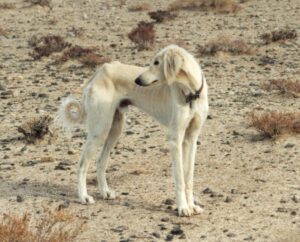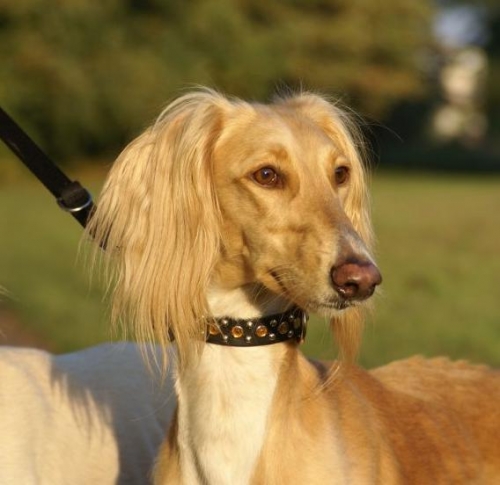Kazakh Tazy gains preliminary recognition as official dog breed
 The Kazakh tazy, one of the world’s oldest dog breeds, has achieved preliminary recognition as an official, independent breed by the International Canine Federation (FCI, Fédération Cynologique Internationale), a critical milestone in efforts to gain full international recognition as a distinct dog breed. The decision represents a victory for Kazakh cynology (regional term for zoology-based dog breeding) and for the Kazakh administration, which have both worked diligently for the past several years to achieve official breed designation by the FCI, part of a broader program to promote and preserve the breed.
The Kazakh tazy, one of the world’s oldest dog breeds, has achieved preliminary recognition as an official, independent breed by the International Canine Federation (FCI, Fédération Cynologique Internationale), a critical milestone in efforts to gain full international recognition as a distinct dog breed. The decision represents a victory for Kazakh cynology (regional term for zoology-based dog breeding) and for the Kazakh administration, which have both worked diligently for the past several years to achieve official breed designation by the FCI, part of a broader program to promote and preserve the breed.
“Tazy,” which translates as “swift, fast,” belongs to the Sighthound group of breeds, characterized by a lean physique, long muscular legs, and a narrow head. Peerless hunters in the steppe and in mountainous areas, the tazy have an incredibly sensitive sense of smell and can run long distances at speeds of 12-15 kilometers (7-9 miles) per hour.
Appreciated for its exceptional physical qualities and character traits, the tazy enjoys a special importance in Kazakhstan, as well as in nearby Turkmenistan and Uzbekistan. The tazy, bred to hunt rabbits, foxes, gazelles, and wolves as well as for guarding, played a fundamental role in the lives of nomads.
Traditionally the only animal allowed to sleep inside a nomad’s yurt and approach children, the tazy’s loyalty and service earned the breed a place in Kazakhstan’s Jety Kazyna,—the seven “treasures” considered essential for a man’s happy life. (The other six treasures are a smart and beautiful wife, fast-footed horse, golden eagle, and three types of weapons). 
As the number of hunters fell, so too did demand for the Kazakh tazy’s services in the post-war years of the 20th century. Their numbers fell and people paid less attention to the breed. Sometimes, tazys were not brought back home from a hunt, left to look after themselves in the wild. Dedicated enthusiasts that were determined to preserve the tazy saved the breed from near extinction. Estimates suggest that several thousand tazy dogs inhabit Kazakhstan today, though the total number in the country is not recorded. The threat of the dogs losing unique cultural features as a consequence of globalization and urbanization remains.
Preserving the tazy
In late 2022, the Kazakh government pledged to allocate 1.4 billion tenge ($3 million USD) to preserve and reproduce the tazy and the tobet, another native Kazakh dog breed. Efforts gained an additional boost in early 2023 when Kazakh president President Kassym-Jomart Tokayev signed a law aimed at preserving and reproducing the tazy and the tobet. Clubs and associations have been created to preserve the breed and to educate potential owners on the needs of the tazy and how to care for it.
Achieving FCI official international recognition is a lengthy process, requiring multiple stages of approval and validation. So far, all requirements for registration of the Kazakh Tazy as an independent breed (for example, large-scale breeding reviews throughout the country, comprehensive medical examination, and results of genetic studies) have been met. In addition, the national cynological organization leading the process must have full membership in the FCI, a feat only recently (August 2023) accomplished by the Union of Cynologists of Kazakhstan. Over the next decade under FCI oversight, experts will conduct health and genetic testing and gather more data on the Kazakh tazy to secure its place as a globally recognized breed.

